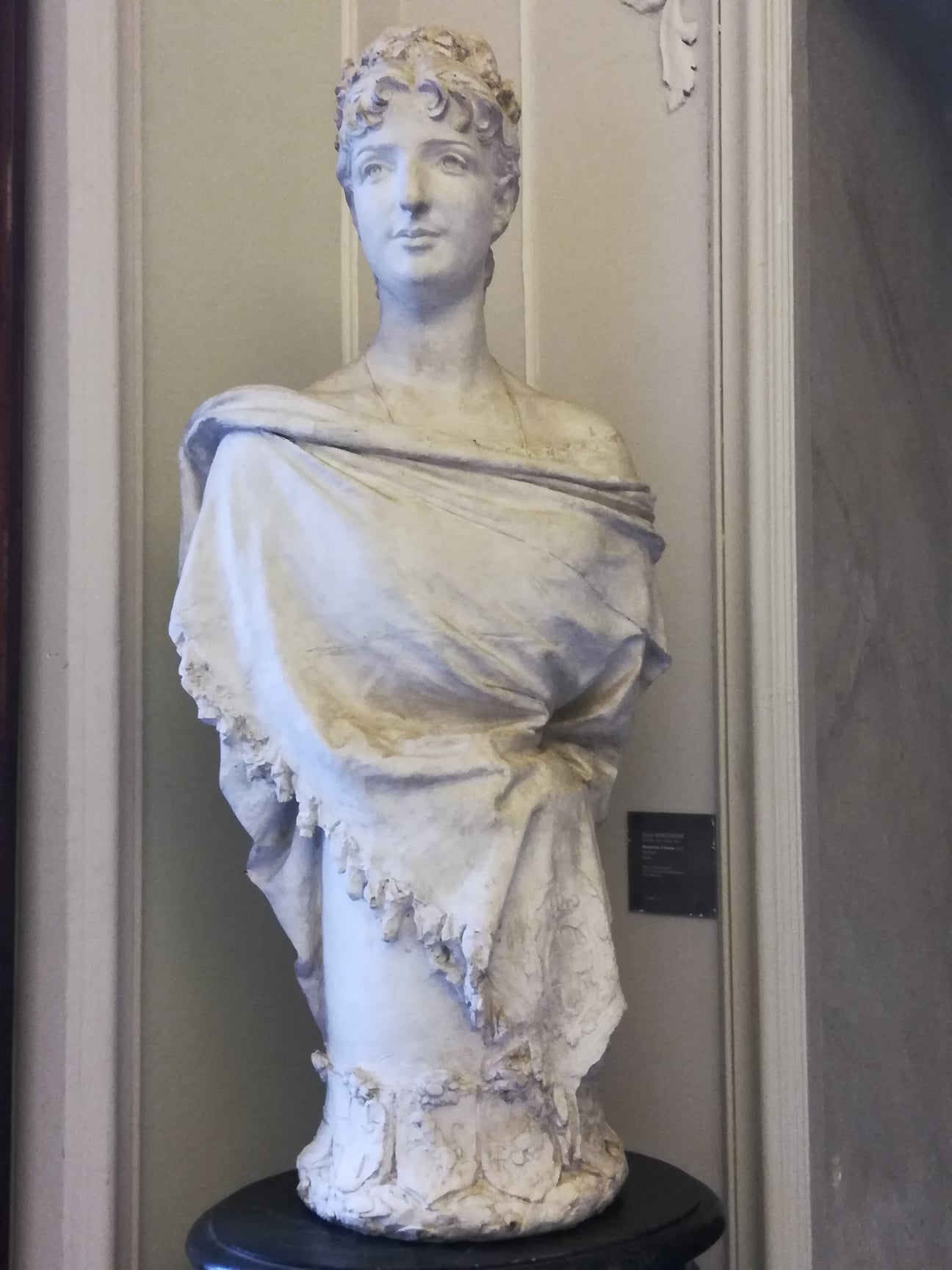
Click here to view image
Margherita of Savoy
Eredi Monteverde 1919 Genova - donazione
Monteverde, Giulio
sculpture
1877 - 1877 - XIX
GAM0208
Unità di misura: cm; Altezza: 118.5; Larghezza: 60; Profondità: 34
gesso- scultura
The daughter of the Duke of Genoa Ferdinand of Savoy and Elisabeth of Saxony, Margherita Maria Teresa Giovanna (1851-1926) married at the age of seventeen her cousin Umberto, Prince of Piedmont, who in 1878 became King of Italy following the death of her father Victor Emmanuel II. The young woman, who lived in the Turin of the Risorgimento, assumed the role of the first Italian queen with brilliant and impeccable manners even during the most difficult events.
Margherita was portrayed by Monteverde in 1877. As she was sensitive to the arts and patroness of musicians and men of letters, including Giosuè Carducci, Margaret allowed the artist fifteen days to pose at the Villa Reale in Monza where he was a guest and, struck and amused by that "beautiful old man, with a Leonardo-esque head", portrayed him in turn. In those years Margherita had not yet become sovereign, but she was "the most intellectual of Queens", in Monteverde's own thoughts. The sculptor, author of monuments and portraits for public patrons and the Italian and foreign elite, was one of the official artists of the young Italian nation and received international recognition for the quality of his work.
A member of the Order of the Crown of Italy, in 1879 Monteverde received the title of Knight of the Civil Order of Savoy, reserved for men of letters and artists; in 1885, the year of his portrait to the king for the Senate, he was awarded the Order of Saints Maurice and Lazarus. The sculpture depicts Margherita Maria Teresa Giovanna of Savoy, wife of Umberto of Savoy, the first king of Italy upon the death of his father Vittorio Emanuele II in 1878. The artist departs from official iconography by eliminating gems and pearls, which are linked to the meaning of Margherita's name. Monteverde chose an almost archaeological and Roman-style sobriety, making the queen's bearing proud, wrapped in a fringed shawl with the Savoy coat of arms, and her facial features realistic, enhanced by her partially bare shoulders and classic hairstyle, crowned with a symbolic diadem of leaves and acorns. The bust is mounted on a cylindrical base, barely hidden by the diagonal drape of the shawl, and roughly modelled at the base with the coats of arms of the main Italian cities surmounted by small sketched daisies. The work was destined for the marble of the Quirinale with the addition of a decorated border along the stole and the elimination of the thread-like necklace.




